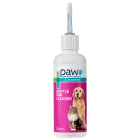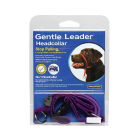
Dietary Help for Hip Dysplasia
Hip dysplasia is a problem that affects both cats and dogs, but it is more commonly found in dogs. The problems with the hip area, where the leg bone meets the pelvic bone, can cause a great deal of pain for your pet. It can also make it difficult for your pet to jump, walk, and even to sit. Researchers have learned that there is a genetic link to the tendency to develop hip dysplasia. They have also learned that providing your pet with a properly balanced diet while they are a puppy has a major impact on preventing hip dysplasia as the dog gets older. In fact, it is actually better to keep large-breed dogs on the light side when they are puppies to prevent causing any undue stress in the hip area.
You can also provide your dog with a number of supplements to assist with hip dysplasia. Chondromprotectives and Omega 3 fatty acids can help make the joints stronger and help to alleviate pain. You can also use nonsteroidal anti-inflammatiory drugs (NSAIDs) to help reduce joint inflammation.

Dietary Help for Dilated Cardiomyopathy
When a pet has dilated cardiomyopathy, it's heart becomes enlarged and the walls of the heart become flabby and thin. As a result, the heart works too hard and will ultimately overexert itself and fail. One of the main causes for development of dilated cardiomyopathy is poor nutrition, particularly if the pet does not have adequate levels of the amino acid taurine. Dilated cardiomyopathy is particularly problematic for cats.
Most pet foods now have taurine added to them in order to prevent dilated cardiomyopathy. For those pets that do develop the problem, their diets can be supplemented with taurine to prevent the problem from developing further or progressing to congestive heart failure. Antioxidant supplements can also help to stop the disease from worsening.
For a pet that needs dietary help with losing weight, controlling their diabetes, or dealing with food allergies, be sure to check out our other articles in the CanadaVet Library.



